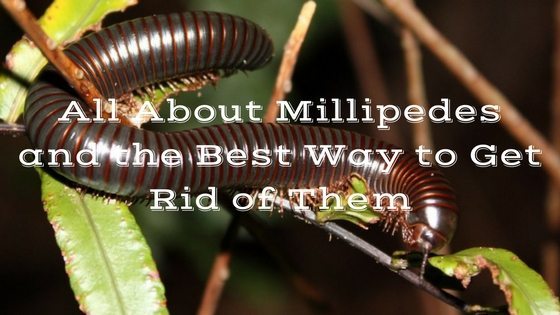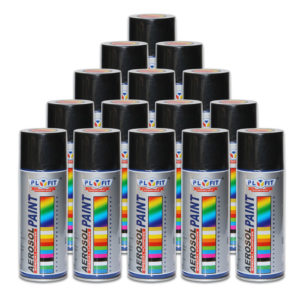All About Millipedes and the Best Way to Get Rid of Them

While a millipede is not harmful, it can be annoying for homeowners. These long, black bugs look like they have a million legs when they crawl along your bedroom window. When threatened, they curl into a ball for protection. While millipedes will not bite you, they will release a foul smell that can irritate your skin or eyes. Since millipedes can be a nuisance, homeowners can use specific pesticides and deterrent techniques to get rid of them.
Millipede Facts
Interestingly, millipedes are one of the oldest creatures to walk the earth. According to fossils, the millipede’s ancestors were one of the largest and earliest invertebrates to walk on land. At the time, the millipede’s ancestor was about six feet long. Millipedes are technically anthropods, which means that they have jointed appendages, an exoskeleton and a segmented body.
In nature, millipedes are the one of the best recyclers. They like to feed on dead animals and plants. Once they have consumed this food, the dead material is cycled back into the soil with additional nutrients. While these insects may be smaller than an inch in length, they play a humongous role in breaking down dead plants and animals.
Where Do Millipedes Like to Live?
As a rule, millipedes like damp, moisture-rich spaces so that they have enough moisture to live. This means that they will most likely find a home in your basement, sliding glass doors, cellar and crawl spaces. While millipedes prefer living outdoors in mulch and leave piles, they will come inside during a drought. They require an exceptionally high moisture level, so millipedes will often die after a day or two indoors. You can treat your property for millipedes, or you can remove any moisture in your home. After a day or two, the dead millipedes can be vacuumed up.
Once millipedes find your home, they may take up residence on your porch or patio. Once they find an entryway through a window, vent or foundation crack, they will move to the most moisture-rich place in your home. Crawlspaces are an ideal habitat for millipedes because they love feeding on the dead leaves that are found within them.
What Is the Difference Between Millipedes and Centipedes?
Despite their name, millipedes do not have a thousand legs. Instead, they are born with just three pairs of legs. By the time they reach adulthood, this number can grow to up to 200 pairs of legs. Each body segment has two pairs of legs. In comparison, a centipede’s body segments only have one pair of legs. Millipedes also have a rounder body, shorter antennae and slower movements than centipedes. Plus, some centipedes are carnivorous and will bite. Millipedes will not bite you, and they are only a nuisance.
Getting Rid of Millipedes
One of the first steps that homeowners should take is to millipede-proof their home. If the millipedes cannot get in, they cannot become a nuisance. Start by sealing any cracks around the foundation and window frames. Millipedes can squeeze through extremely tiny holes, so you have to make sure that every crack or hole is closed up. Door sweeps can prevent them from coming under the door. Meanwhile, a dehumidifier can remove the moisture that millipedes need to live.
Since millipedes need moisture, you should remove moisture sources like leaky faucets or condensation under your inks. Millipedes also prefer cooler temperatures, so a warmer home can prevent them. On the outside of the home, keep mulch and compost piles away from the home. You cannot prevent rain from attracting millipedes, but you can make sure that damp piles of leaves are placed at a distance from the home. Clean out the gutters and divert the water as far from your home as possible. If you water your lawn, do it in the morning so that it has time to dry before millipedes come out at night.
Pesticides for Millipedes
While millipedes may be annoying, they are not going to hurt you. If you do want to get rid of millipedes, pesticides like Invader Aerosol, CB Intruder HPX or Drione Dust can help. Granule pesticides like EcoExempt G or Demand G are also useful.
For more natural control methods, try out diatomaceous earth. This natural pest control product is made up of fossilized diatoms that are extremely sharp. If millipedes walk through diatomaceous earth, it cuts their body and causes it to dehydrate. As they dehydrate, they start to die.
Another technique is to use boric acid. This weak acid is made from a natural mineral known as borate. Sold in a powder form, it dries out the millipede’s body like diatomaceous earth does. Wood ash from your oven or outdoor stove can be used to dry the millipede’s body quickly and easily. Put it on the soil near your foundation, and the millipedes will avoid it because the wood ash is too dry for them.
If you are worried about diatomaceous earth or boric acid hurting your pets, you can always invest in chickens. Chickens love to eat insects, and they will remove any insect problem that you may have naturally. Plus, they can provide you with eggs later on. There are specific breeds of chickens that work well for insect removal.
Non Toxic Spray

This non-toxic spray kills larvae, eggs, and adult insects by breaking down their exoskeleton. It is safe to spray around the home and works only on the insects. Feel good about spraying indoors around pets, plants and children.
All Natural Non Toxic Insect Killer Spray by Killer Green
